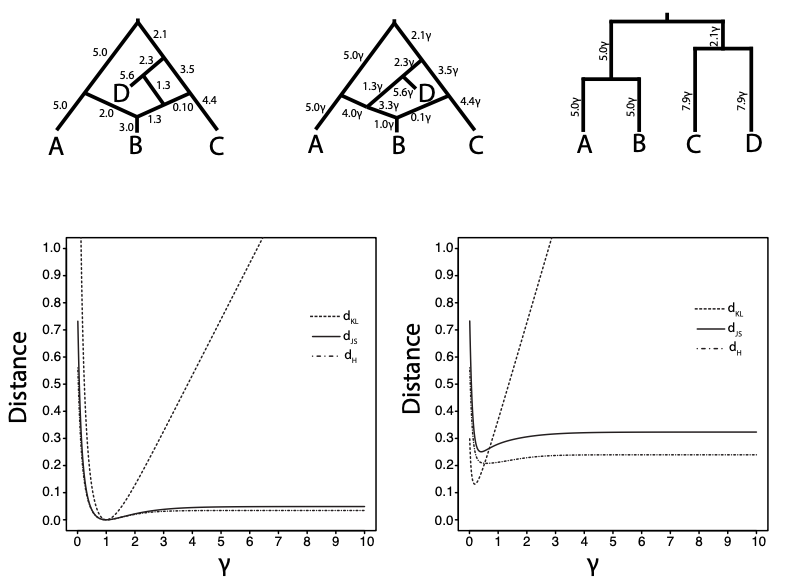Our new paper on probabilistic species tree distances is now out in Systematic Biology! In this study, we detail a new approach for probabilistic species tree model comparison, implemented the R package pSTDistanceR.
Abstract:
Despite the ubiquitous use of statistical models for phylogenomic and population genomic inferences, this model-based rigor is rarely applied to post hoc comparison of trees. In a recent study, Garba et al. derived new methods for measuring the distance between two gene trees computed as the difference in their site pattern probability distributions. Unlike traditional metrics that compare trees solely in terms of geometry, these measures consider gene trees and associated parameters as probabilistic models that can be compared using standard information theoretic approaches. Consequently, probabilistic measures of phylogenetic tree distance can be far more informative than simply comparisons of topology and/or branch lengths alone. However, in their current form, these distance measures are not suitable for the comparison of species tree models in the presence of gene tree heterogeneity. Here, we demonstrate an approach for how the theory of Garba et al. (2018), which is based on gene tree distances, can be extended naturally to the comparison of species tree models. Multispecies coalescent (MSC) models parameterize the discrete probability distribution of gene trees conditioned upon a species tree with a particular topology and set of divergence times (in coalescent units), and thus provide a framework for measuring distances between species tree models in terms of their corresponding gene tree topology probabilities. We describe the computation of probabilistic species tree distances in the context of standard MSC models, which assume complete genetic isolation postspeciation, as well as recent theoretical extensions to the MSC in the form of network-based MSC models that relax this assumption and permit hybridization among taxa. We demonstrate these metrics using simulations and empirical species tree estimates and discuss both the benefits and limitations of these approaches. We make our species tree distance approach available as an R package called pSTDistanceR, for open use by the community.
Congrats to Rich and Todd!
Adams, R.H, and T.A. Castoe. 2019. Probabilistic species tree distances: implementing the multispecies coalescent to compare species trees within the same model-based framework used to estimate them. Systematic Biology. Link

